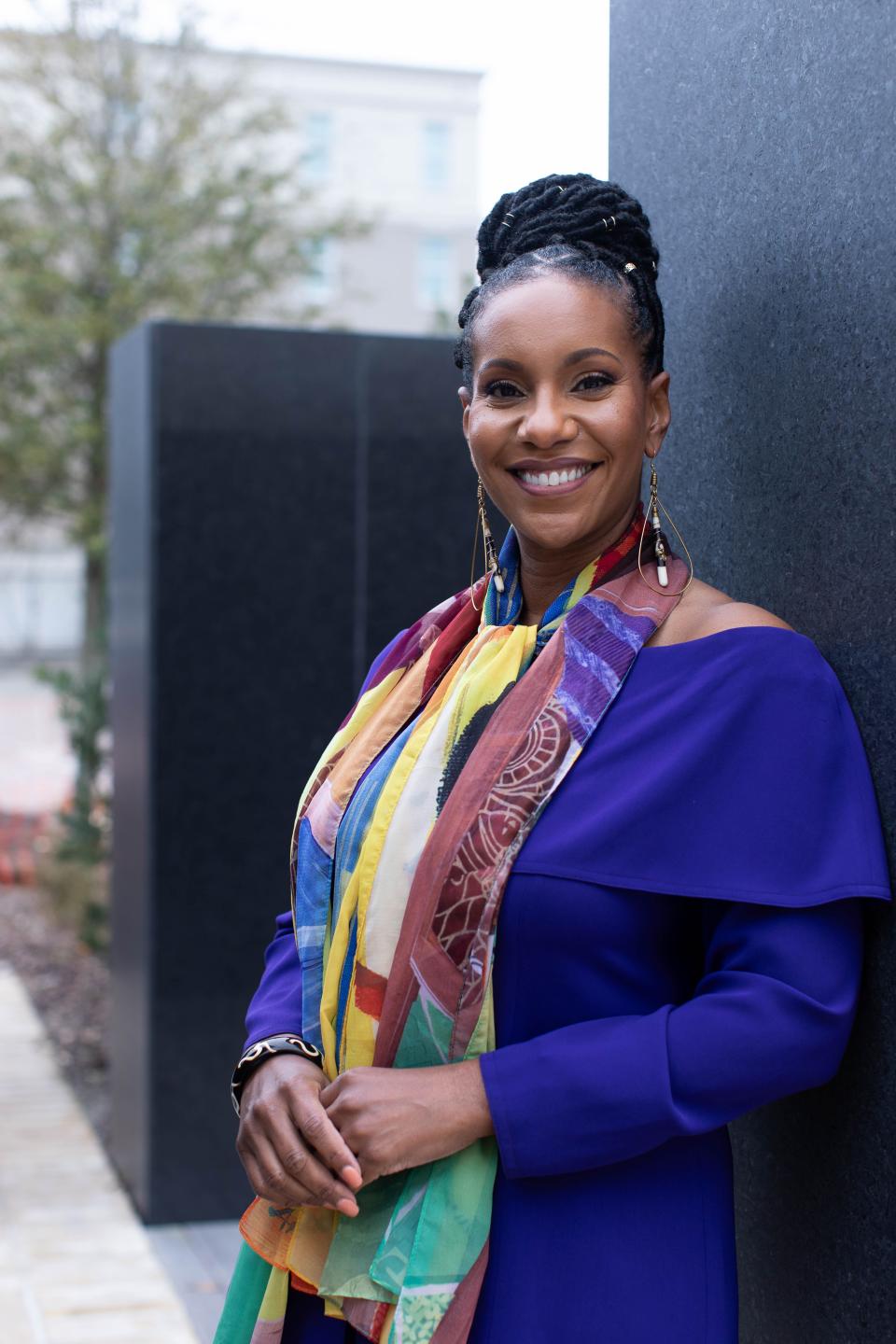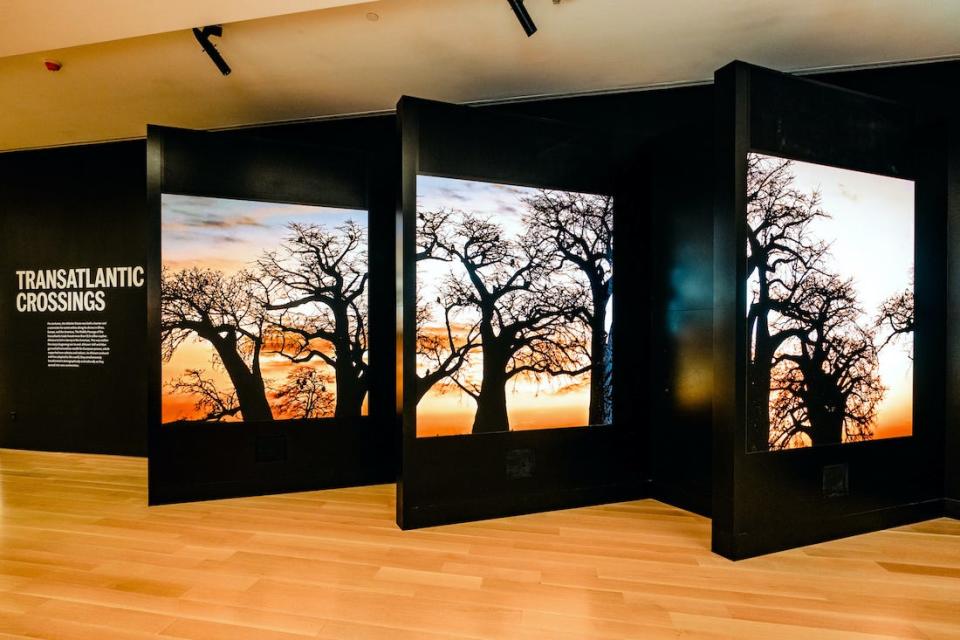15 Minutes With ... Dr. Tonya Matthews of the International African American Museum
Dr. Tonya Matthews was taught never to turn down an opportunity without exploring it first. But in 2020 Dr. Matthews, like many others, was more focused on stability and familiarity than new opportunities.
Still, lessons engrained during childhood run deep, so when a national search firm called Dr. Matthews to discuss the position of President and CEO of the new International African American Museum (IAAM) in Charleston, she was willing to listen. She says she liked what she heard and couldn’t say no to the chance to lead the museum, which was not yet open but was already 20 years in the making.

IAAM is now the second-largest museum focused on African American history, after only the Smithsonian’s National Museum of African American History and Culture in Washington, D.C.
The waterfront museum, located on the site of Charleston’s infamous Gadsden Wharf, brings to life the history and stories of the African American experience across continents and generations.
Dr. Matthews uses her expertise in the intersection of formal and informal education to guide the IAAM’s fusion of stories and education to create a learning experience that is as impactful as it is educational. We talked with Dr. Matthews to learn more about her story, and the IAAM.
TALK Greenville: Thanks for taking the time to talk with us. How did the opportunity to lead IAAM as President and CEO come your way?
Dr. Matthews: I’d worked in museums for just over a decade. It was the end of 2020, and I wasn’t looking to do anything different since the world was a little crazy. When I got the call about IAAM, it was exciting, unheard of, and a big, impactful thing, so my ears perked up. The history of the work to get this museum off the ground was too compelling to turn down. The first public mention of opening the museum was in 2000, so to be a part of the last step to open the museum was an incredible opportunity. We opened summer 2023 and it was an amazing moment, 23 years in the making.
A Look Back: International African American Museum opens in Charleston
TALK Greenville: The IAAM building and landscape reflects its site on Gadsden’s Wharf. Could you talk a little about the significance of the location?
Dr. Tonya Matthews: It’s one of our nation’s most prolific former slave transporting wharfs. Historians estimate that upwards of 40% of enslaved Africans entering the US came in through Gadsden’s Wharf. The museum was able to get one of the last undeveloped pieces of the wharf. Our building hovers over the ground on 18-foot pillars to honor this space, allowing us to have a garden outside. There is a reflecting pool, botanical garden and sculptures that honor the stories, memories, hope and resilience that is part of that space.

TG: What is your favorite artifact in the IAAM?
TM: That is like asking a parent to choose their favorite child, but there is one artifact I have a personal connection with. It’s called a Freedman’s Badge. These were metal badges that free African Americans carried during the time of slavery to prove that they were free if they ever got stopped. This artifact is special to me because it is the first artifact I got to personally receive for the museum. A resident found it on their property and donated it. Being able to put my hand on it before we put it in its case was special.
TG: What are your plans for the future of IAAM?
TM: Activating the “international” in the IAAM. Our next steps are building partnerships, relationships, sharing knowledge. Charleston is an active port and an international city. We have many international global companies in South Carolina. As the International African American Museum, there is more we can do to be a part of that conversation. I’d also like to be a partner and champion for smaller, hometown museums that tell stories like ours and stories nothing like ours. We welcomed our 100,000th visitor in January and we’re looking forward to welcoming our 200,000th visitor.
TALK Greenville: You were recognized as one of the Most Influential Women in Charleston by Charleston Business Magazine in 2021 because of your service and accomplishments. What have you not accomplished that you still want to do?

Dr. Matthews: In the museum we have a digital touch table. Think of an iPad big enough to have 16 people on it simultaneously. The digital touch table encourages visitors to visit all the places in South Carolina that are important to history. I want to visit all these places and do road trips all over the state. If you grew up here, you might take South Carolina’s role for granted. But all the stories I heard growing up, I had no idea they were related to the state. I learned that Charleston was a cornerstone of Brown vs. the Board of education. Who knew? I’d love to take trips around the state to visit these historical sites.
TG: The museum offers youth and families opportunities to learn more about African American history and culture through the Young Griots Drop-In Workshops. Can you share more about this workshop and other youth programming offered?
TM: Griots is a term for “storyteller,” heard in African cultures. When young people see value in their own story, they see value in other people’s stories. We do story bracelets where each colored bead represents a different feeling associated with the young person’s story. We have an exercise called Story Stones where kids decorate a stone so that it tells their story, but to decorate the stone, you must verbally share your story. When kids are telling their story with the stone they are like, “Wow, others are listening to my story, and I know how to tell it.” We also have a genealogy program. We tend to think only adults are interested in genealogy, but we see so many young people who are fascinated by the idea of their great-great-great relatives. They enjoy seeing how far back they can go and hearing about times before phones and cars.
A Look Back: African American museum in SC will stand where 100,000 slaves took first steps on American soil
TG: You are a published poet with a degree in Biomedical Engineering from John Hopkins University. How were you encouraged and inspired to pursue your creative passions and your technical interests?
TM: It was the privilege of being the daughter of an educator. My mother was a teacher and my dad is the classic, old school “whatever you start, you better finish,” mentality. They both encouraged me to try anything I wanted, but to know I had to finish it. They were teaching me responsibility but also that there are no limits — if you finish what you start. My parents never made me choose between options. I could see that I was good at two seemingly different things and I enjoyed both. I loved math and science, but I needed poetry to understand the human side of life. I loved language and description, but I also understood that poetry needs a plan and organization to be communicated properly. It’s a balance and it’s an important part of who I am.
TG: In each community where you have settled, you are known for planting roots on the side of town best known for keeping an eye on progress. How do you determine which side of town this is?

TM: I like energy and a sense of change, whether it’s in my career or the part of town I live in. My mother would always wonder why I didn’t pick a neighborhood that looked more like the one I grew up in. I lean towards projects in progress, so I am drawn to communities considered up and coming. There is something about the energy, entrepreneurship and sense of community in these areas. They are a wonderful place to engage with young people. They’re very inquisitive and ask, “Who are you? Did you just move here?” That allows me to talk about where I work and build authentic relationships in my community.
This article originally appeared on Upstate Parent: 15 Minutes With ... IAAM President Dr. Tonya Matthews
